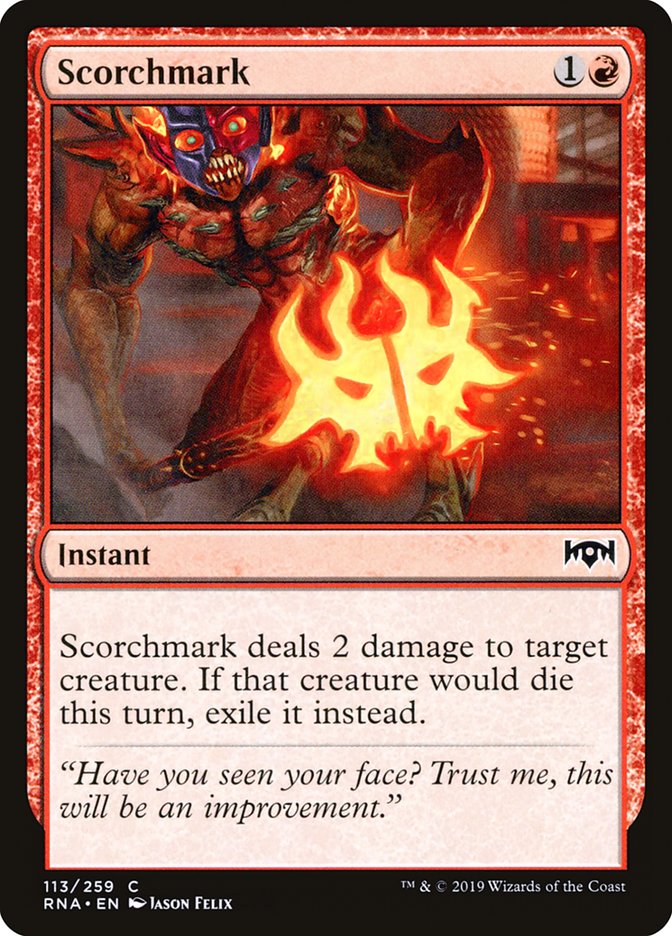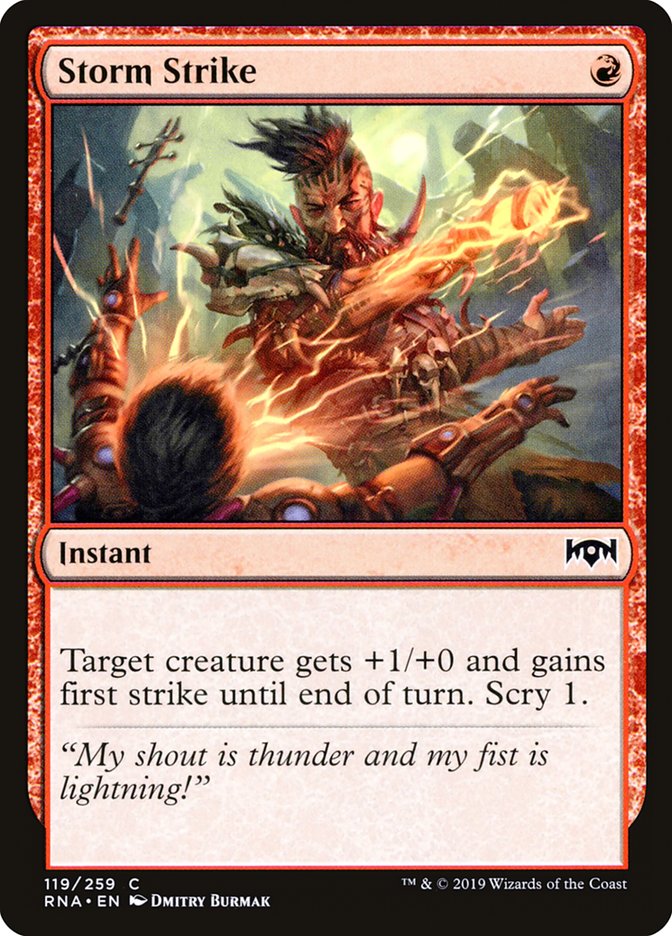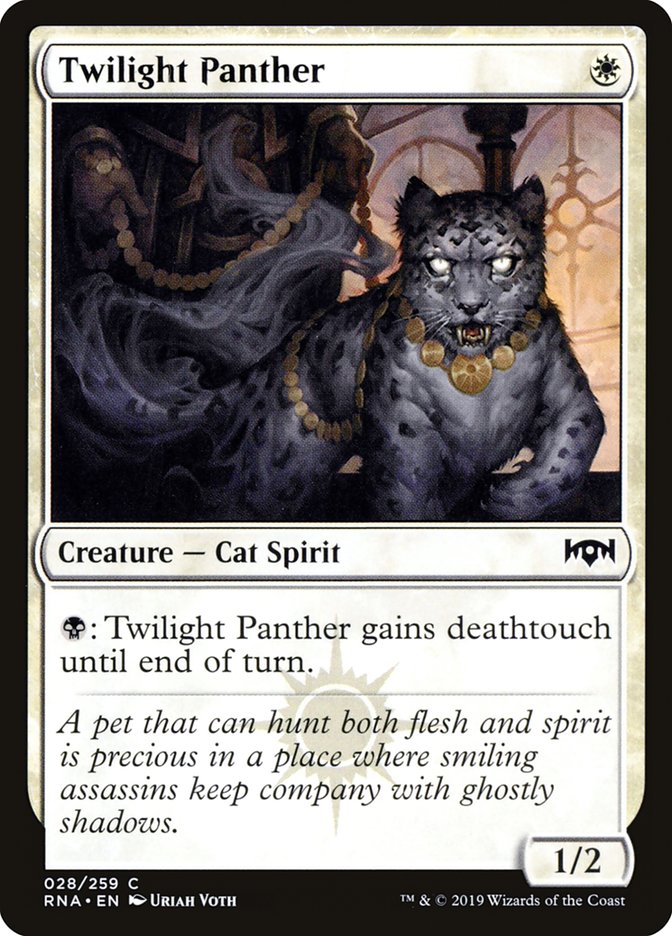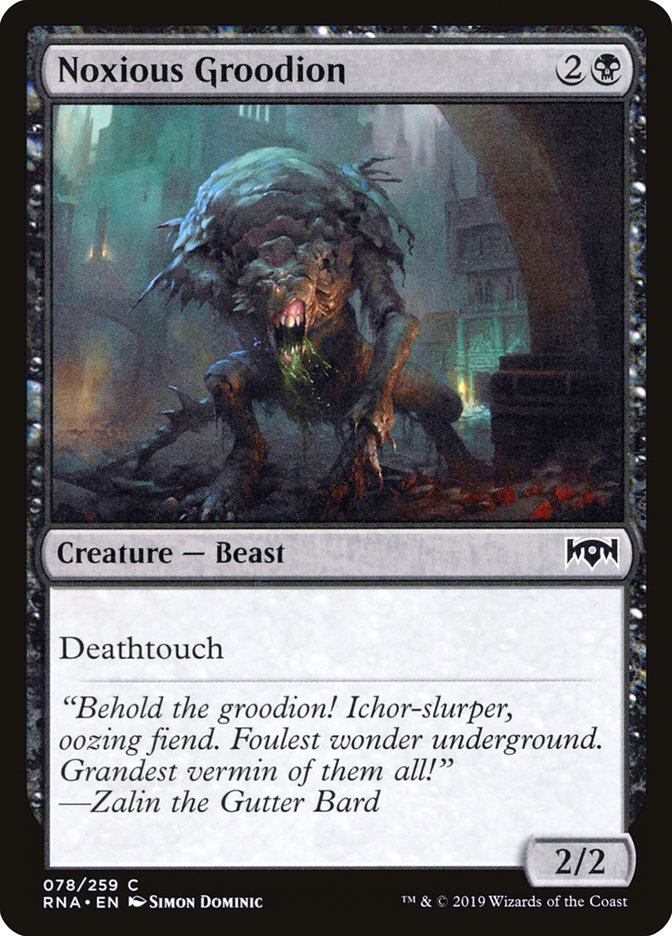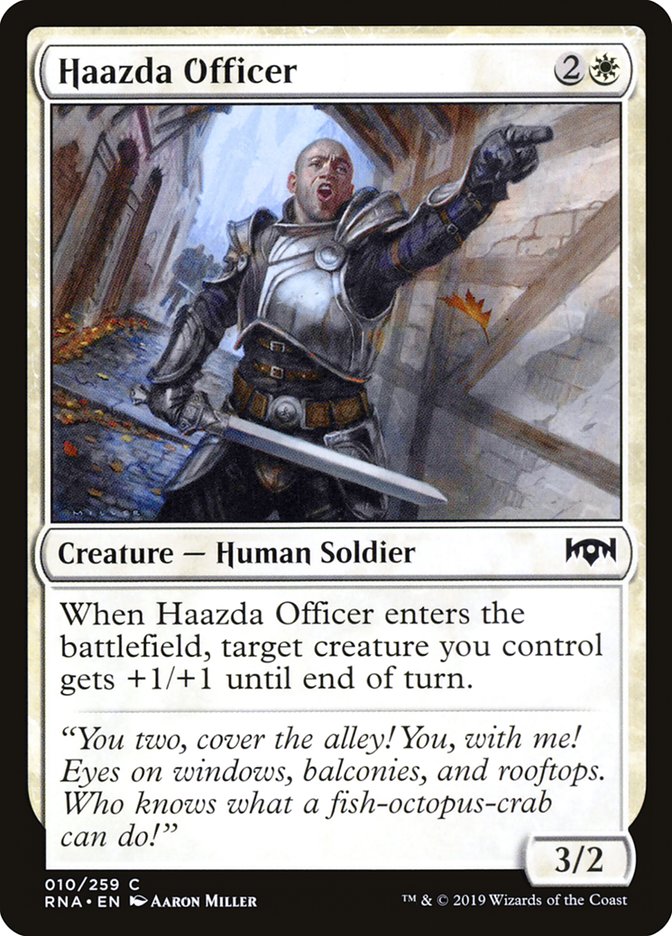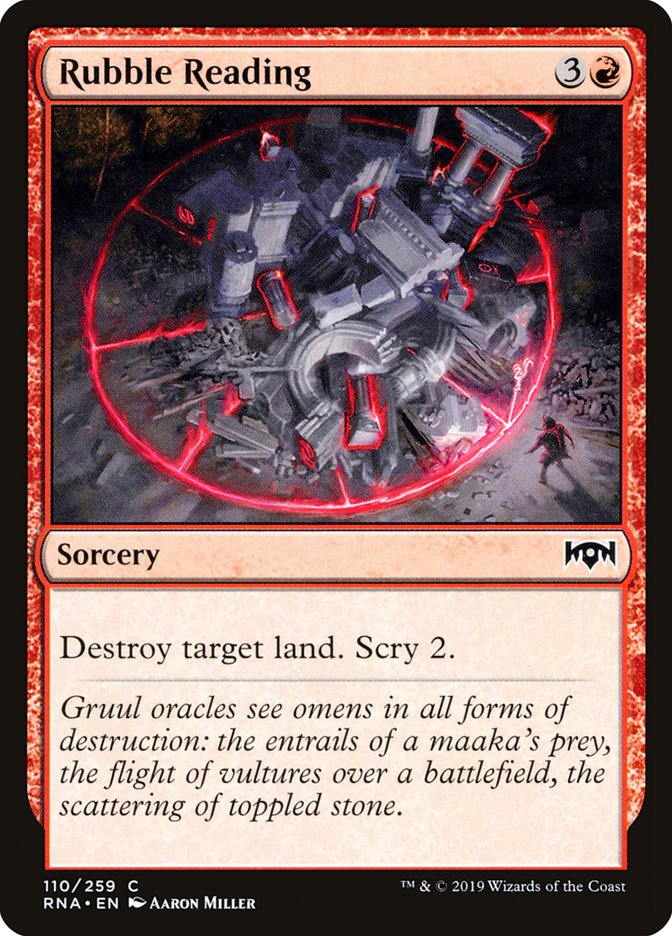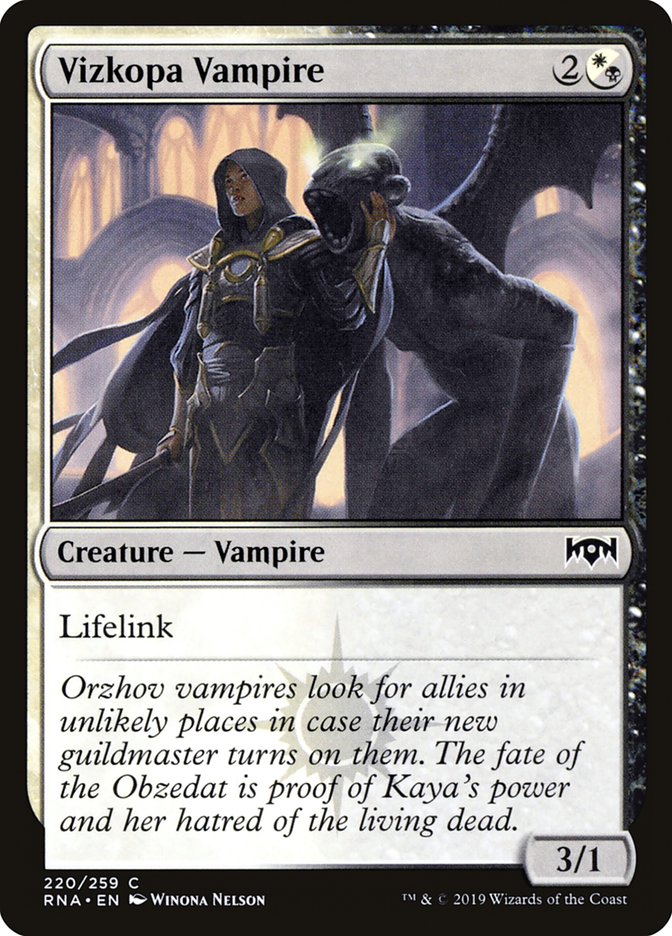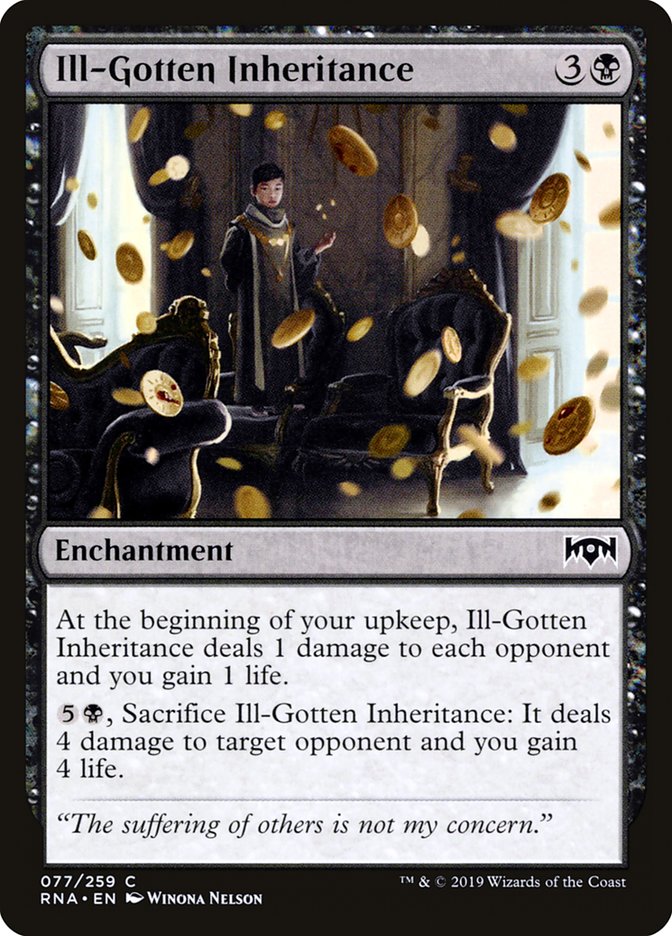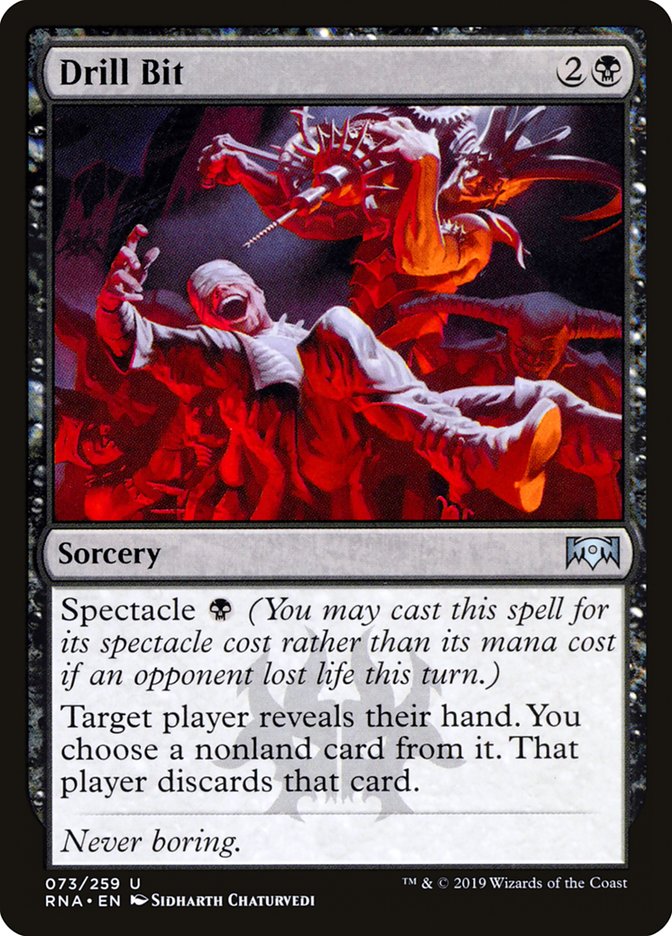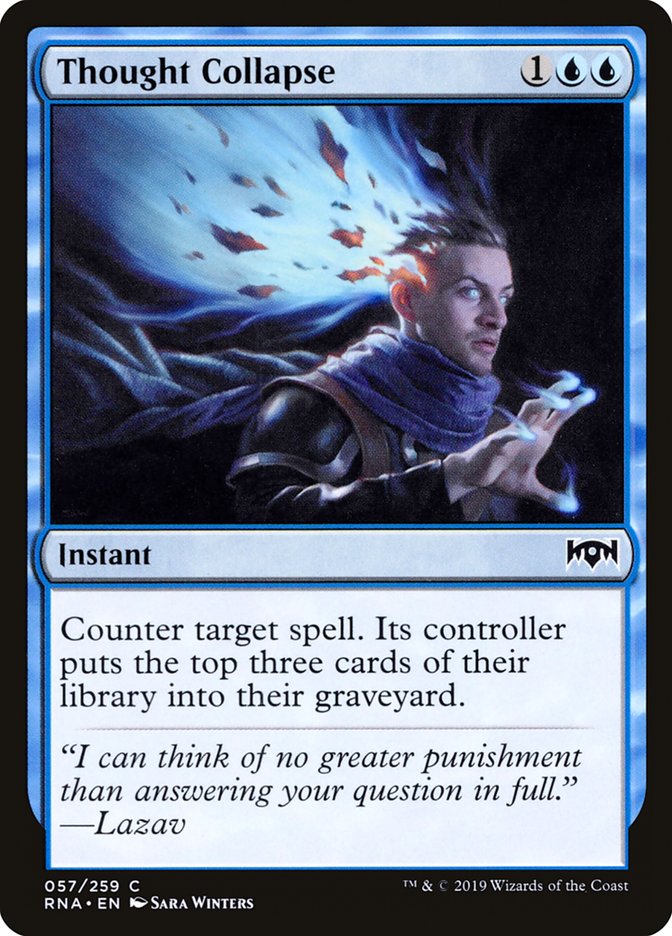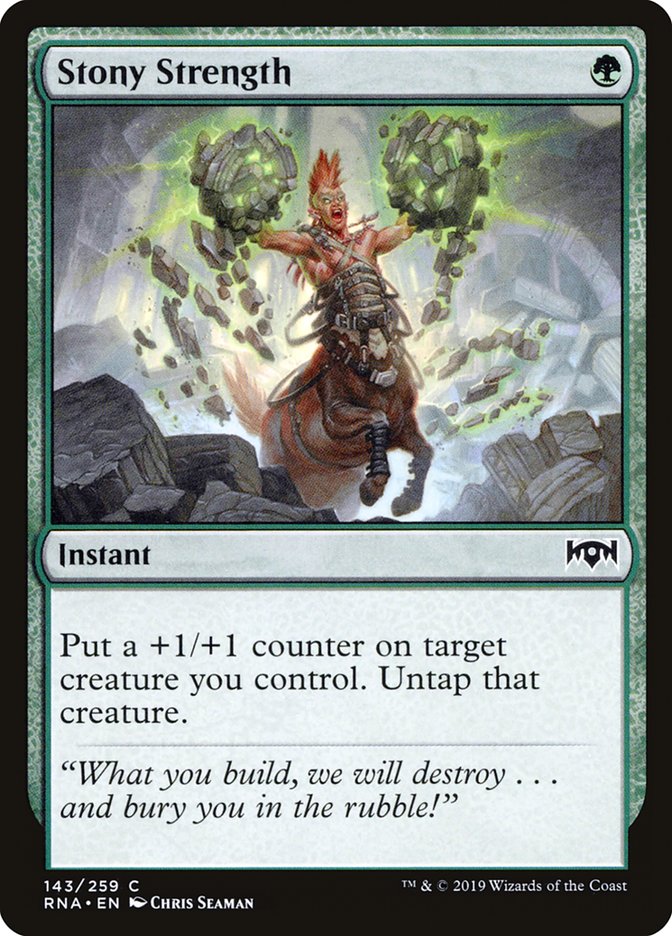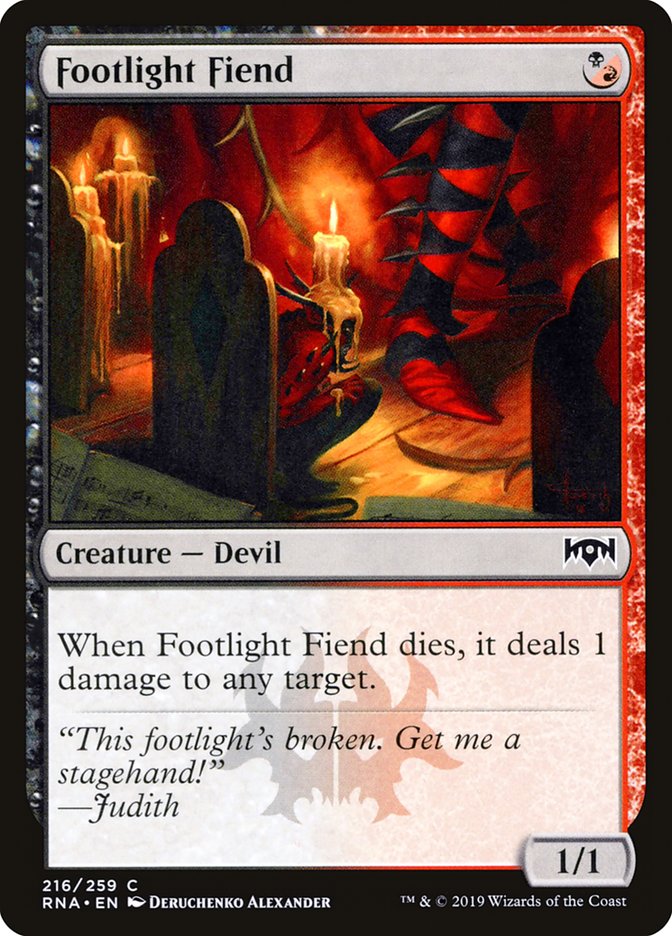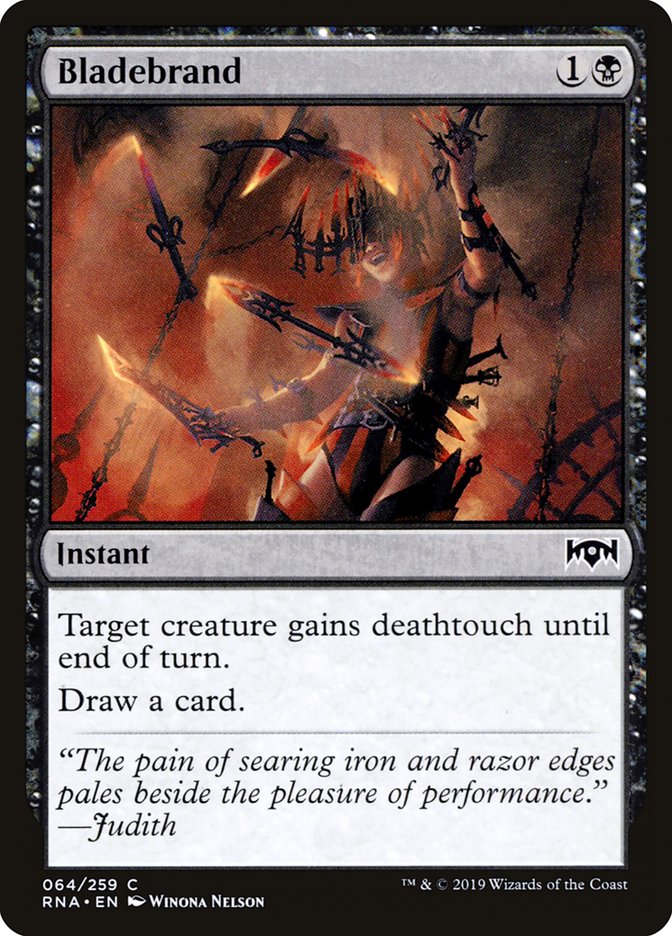Selecting the twentieth to 23rd card for a draft deck is a skill. One of the first rules of Limited is to play your best cards, but draft decks have filler too. The delta between the best cards and the worst cards is huge. Maybe the first fifteen cards in the deck are great, but what about the last eight? Don’t just shrug off this decision and throw what you think are the best of the worst cards into the deck. What your deck has matters. What your deck lacks matters. Context matters.
If you asked me a couple months ago if I would rather have Scorchmark or Storm Strike in my Gruul deck, I would have said Scorchmark by a reasonable margin. Now, if I have the option between the two, I’ll choose Storm Strike almost every time.
A card is put in a deck for a reason. If you find yourself shrugging and throwing some common in as the 23rd card, stop and think for a minute.
The reason that Scorchmark and Storm Strike are fighting for the last slot is because they both attempt to solve the same problem: deathtouch creatures. Savage Smash can handle most blockers and creatures struggle to block Frenzied Arynx and Rampaging Rendhorn to start with. Cards like Twilight Panther and Noxious Groodion pose a problem for that strategy.
There are merits to both cards in a vacuum to solve this problem, but it turns out that many archetypes in Ravnica Allegiance don’t have good targets for Scorchmark. It’s a dead card more often than I thought it would be and at least Storm Strike lets creatures tangle in combat with larger blockers.
Decisions like these take a deck from a 2-1 to a 3-0. Draft decks have filler. They’re clunky. Giving filler cards a purpose is what turns a typical deck into a smooth-running machine. It’s hard to think about how cards as mediocre as Haazda Officer or Vizkopa Vampire could have a specific purpose, but they can. Every card can. Even cards that are unplayable most of the time, such as Rubble Reading, can earn time in the sun.
There are two main reasons to choose which filler card to put in a draft deck. The card should either fill a hole in what the deck lacks in order to shore up a weakness, or it should pair well with the strategic plan of the deck in order to maximize synergy.
Shore Up a Weakness
The first thing I do when I look at a draft deck is discern its weaknesses. Here are some questions I make it a habit to ask myself:
1. What’s my plan against fliers?
2. How do I beat an aggressive start?
3. Do I have enough removal? Does anything I have function as pseudo-removal?
4. What’s my plan against bombs?
5. Do I have ways to use excess mana?
6. Do I have a good curve?
7. How would I describe my deck? Is it aggressive?
8. Are there any commons in the set that pose a problem for my deck?
The answer to each of these questions helps bring to light what’s best against the deck. Once you can discern the common ways to lose, you can use that to inform the decision of which filler cards to include.
Are you worried about falling behind against an aggressive deck? Vizkopa Vampire does double duty. It’s not only a source of lifegain; it’s also a cheaper play to keep your curve low.
This comes at a trade-off of power, because the Vampire is very easy to invalidate in Ravnica Allegiance. Faerie Duelist laughs at the card. But if your deck is well-suited to fight fliers like Faerie Duelist and Senate Courier, and likely to struggle against a Rakdos or Gruul deck charging out of the gate, it’s reasonable to include one or even two copies of Vizkopa Vampire.
Ill-Gotten Inheritance is extremely impactful against some archetypes and quite bad against others. Assuming you’ve drafted one of the decks where Inheritance is a potent threat, how does that inform your last inclusions?
It’s not as simple as starting Expose to Daylight as protection against Ill-Gotten Inheritance, although that can be a reasonable solution. Expose to Daylight is not filler; it’s a sideboard card. It can be correct to include the card, but only with ways to mitigate the potential of a dead card. An Azorius control deck with two copies of Prying Eyes can discard Expose when it isn’t relevant. Otherwise, maybe Eyes Everywhere is a more reasonable answer.
It’s important to understand why the card poses a problem for your deck. Is Ill-Gotten Inheritance good because it sits on the battlefield forever and eventually kills you, or are you just afraid of it as a symptom of being weak to aggressive starts and can solve that problem with Vizkopa Vampire instead?
A couple of weeks ago, I drafted a deck with very few ways to win the game. I wasn’t particularly concerned for most matchups, but I didn’t have the ability to fight a counter-war and hence was terrified of the card Thought Collapse. I used my last filler slot by splashing the card Drill Bit off of some Rakdos Guildgates. This way, the turn I needed to resolve something, I could protect it. While this example is specific to Ravnica Allegiance thanks to the Clear the Mind archetype, don’t be afraid to take risks in general. A weakness is a weakness, and if you can take measures to mitigate that weakness, they can be worth the risk.
Maximize Synergy
When a deck is synergistic and each card works well together, it can be an unstoppable force. But most Limited decks don’t have such a synergistic density. Each deck is made up of a variety of cards. Some work well with each other, and others don’t. Selecting your last playables to maximize the synergies within your deck is one of the best ways to get the most miles out of filler cards.
Stony Strength ends up in the sideboard more often than not. A +1/+1 counter and the potential to ambush an attacking creature just isn’t impactful enough, even though it’s only one mana. Both Gruul aggressive decks and Simic tempo decks would rather play Gift of Strength to facilitate the beatdown plan.
The exception is when the +1/+1 counter matters and it doesn’t take much. Skatewing Spy, Sharktocrab, Benthic Biomancer, Bolrac-Clan Crusher, and Trollbred Guardian are all examples of cards where it then becomes reasonable to consider Stony Strength over Gift of Strength.
Footlight Fiend is a fine creature to trade with early-drops, but it’s not a card I’m happy to include in my deck. Bladebrand is better, since sometimes it will generate a two-for-one, but it usually ends up in my sideboard. However, the two cards together create a potent combo. When Footlight Fiend dies, if it had deathtouch, it can kill any creature with the one damage it deals.
I’m quite happy to include both Bladebrand and Footlight Fiend together, even though I’m not very happy to include just one. These are the kinds of synergies that make a draft deck function as if it has less filler, because the filler cards in the deck function so well in tandem.
The number of permutations of cards in any set with synergies is quite high. When you’re figuring out which cards to play in those last slots, remember to look for novel interactions between the filler cards and either the cards you’re already playing or other filler cards.


